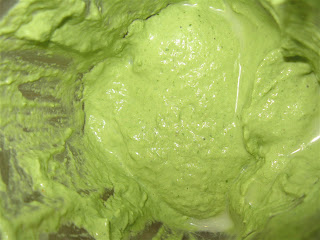 Is it possible that we are nearing the end of the biblical deluge that has pelted the northeast for the most part of this month? I am not totally convinced, being the skeptic that I am so, I am waiting to see if the seven plagues begin showing up. Then perhaps I will be a believer. In the interim the rapture is taking the form of the first cherries that have managed to survive and become potent even during this rather molding stretch.
Is it possible that we are nearing the end of the biblical deluge that has pelted the northeast for the most part of this month? I am not totally convinced, being the skeptic that I am so, I am waiting to see if the seven plagues begin showing up. Then perhaps I will be a believer. In the interim the rapture is taking the form of the first cherries that have managed to survive and become potent even during this rather molding stretch. Lost already, due to the steady steam from above, are those precious gems that under ordinary circumstances struggle to survive given that everyone and everything desire’s to nibble on them. Strawberries at this point must be written off until next year with the supreme hope that June remembers it is supposed to be sunny and warm.
Moving forward harboring no grudge I embrace nature’s readying replacement. Excitedly, those dangling crimson orbs are here. Cherries are the first of the stone fruits, and an absolute indication that summer has arrived irrespective of all that has not been. I hope and pray that now the sun shines down upon these trees further ripening explosive, juicy drupelets for us all to enjoy. I am chanting, here comes the sun, and hope the next sign is not the blistering, rot of excessive moisture but rather the heavenly redolence of the cherries’ expectant cousin, the peach.
Cherry Trifle - yields 6 to 8 servings
1/2-cup sugar
Zest of one orange
1-1/2 cups fresh orange juice
1-pound mascarpone or sour cream
6 Egg Whites - beaten stiff
1-pound cherries – pitted and cut in half
2 pounds Lady Finger cookies or stale pound cake
1/2-cup grated chocolate
In a 1-quart saucepan heat the sugar, zest, and orange juice, and cook until the sugar is dissolved and syrupy - but not caramelized. Cool. Whip the egg whites to stiff peak with a hand beater or in a standing mixer, and pour in the sugar syrup while it is still warm slowly into the egg whites to completely incorporate. Keep the egg white mixture whipping as you pour in the syrup, and continue until the egg mixture is cool. Fold in the egg whites into your mascarpone thoroughly.
In a trifle dish or a high rim 9" glass pan place a single layer of the Lady Fingers down. Spread a layer of the mascarpone and sprinkle over some of the cherries. Repeat this layering ending with a layer a mascarpone. Sprinkle the chocolate over the top. Refrigerate 8 hours or overnight before serving.



























